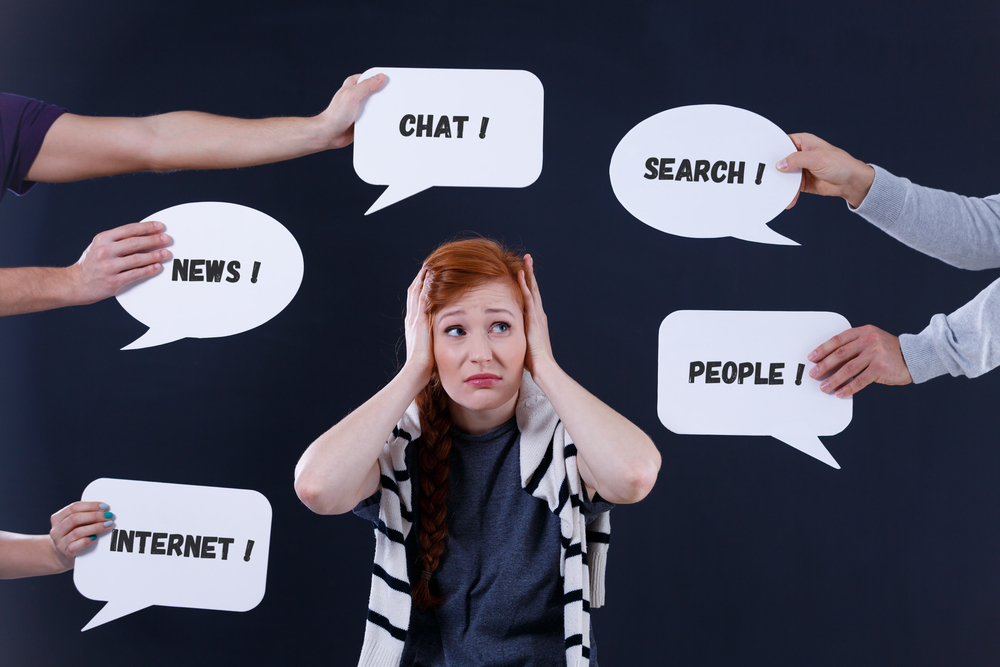What’s the first thing you see each morning and the last thing you see before you fall asleep at night? Is it the face of your loved ones, a book, or the icy glow of an electronic device? While we would all like to believe it’s the face of our significant other, it’s more likely our smartphone screen.
We now live a digital era, where anything and everything seems to be ruled by technology. It’s haphazardly flooded into our lives and made its way into each and every crevice that we used to call our own. We’re drowning, but it’s not because of the technology itself. Rather, we’re participating in our own demise by failing to set healthy tech boundaries.
I dedicate an entire chapter to this phenomenon in my book The Future of Happiness, but I’d like to share with you 5 Happy Hacks for Tech Boundary Setting that will turn you into a happier spouse, parent, co-worker, and/or manager. If only I can get you to focus on my writing for the next five minutes…
1. Turn Off Notifications. I know what you’re thinking, “I don’t need to turn off notifications, I can just ignore them.” Or “I can’t possibly turn them off, what if I miss an important news headline or sports score?”
While it’s common to feel the need to be constantly connected and in ‘the know’, research has shown that individuals who keep their notifications “on” report high levels of inattention and hyperactivity, which in turn predicts lower productivity and psychological well-being. Maybe you won’t be the first to know who wins the big game, but it might be worth it for your mental health.
2. Limit Your Newsfeed Check-Ins. As much as possible, limit checking of information feeds (email, social media, news, sports) to three times a day. A recent study showed that checking email less frequently significantly decreased stress, leading to an increased sense of meaning, social connectedness, and even sleep quality! And, not to get too crazy, but try waking up to an old-fashioned alarm clock, you know the kind with big digital letters and a built-in radio. Using your smartphone alarm increases the likelihood that the first thing you see when you wake up is depressing news headlines or the mountain of unread emails waiting for you.
3. Protect Your Consolidation Time. Consoli-what? Yeah, your brain actually utilizes downtime to download and consolidate all of the information it receives during the day. If you fill your downtime with digital distractions like playing games on your phone, posting on social media, or even reading e-books, your brain has no time left to process the world and form long-term memories.
The National Sleep Foundation and the Mayo Clinic recommend eliminating screen time one hour before bed to block the release of stimulating neurotransmitters that keep your body from entering a restful state. Try to establish device-free brain breaks (before bed/after waking up) to help your brain recharge and refocus.
4. Set Up Safeguards. Don’t be afraid to protect your family from being overrun by technology by establishing wifi free times for your kids or utilizing protective hardware and software like the KidsWifi router and Qustodio. While developed for children, parents can use the same safeguards to control their own internet use. Simply set your router to turn off at a set time each night or block distracting sites after a certain hour.
5. Model Digital Citizenship. You’ve got standards for what you wear when going out, for how you speak when kids are around, and even for the jokes you’ll share with others. Why not have standards for your use of technology when interacting with others? Try these ones on for size: look up from your computer when someone walks into the room, take out your earbuds to say hello, close your laptop and refrain from checking your cellphone during conversations. There are very few things in life more irritating than trying to have a conversation with someone who is texting or responding to emails. Try your best not to be that person and encourage those around you to do the same.
Setting boundaries around technology use is a great first step towards controlling the flood of technology in our everyday lives. Although it can be difficult to create new habits, after a period of adjustment you’ll find you are happier and more present. It might even rub off on those around you! Take a chance and try these strategies out for size and when your friends ask you why you seem so grounded, share your newfound wisdom with them!


